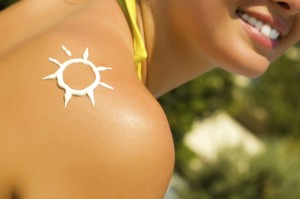 Ok, Ok I get it! I know you know tanning is bad for you and it is aging your skin. But do you REALLY know what’s happening when you are laying underneath those UV rays? A lot of people hear it’s not good for you because…it’s ‘just’ not good for you. But you deserve a real explanation so hear me out!
Ok, Ok I get it! I know you know tanning is bad for you and it is aging your skin. But do you REALLY know what’s happening when you are laying underneath those UV rays? A lot of people hear it’s not good for you because…it’s ‘just’ not good for you. But you deserve a real explanation so hear me out!
Tanning beds are compromised of UVA and UVB rays. I know you are thinking but my bed I go to doesn’t have the burning rays so it’s better right? Not necessarily. UVA rays are known as the AGING rays. UVA rays damage skin cells called keratinocytes in the basal layer of the epidermis, where most skin cancers occur. UVA rays also penetrate the dermis where fibroblasts which create our collagen are located and where our elastin can be found. When our skin cells are damaged we experience a loss of elasticity in the skin and a loss of volume due to a decrease of collagen. UVB rays are known as the BURNING rays. These rays penetrate the epidermis and can cause burning and blistering of the skin. These rays play a key role in the development of skin cancer and a contributory role in tanning and photo-aging.
OK so I’m done preaching and the good news about all of this is IT’S NEVER TOO LATE TO STOP! Prevention can help at any age and you aren’t too young or old to start. If I had to pick ONE product to have at all times it would be sunscreen. And this includes the winter too my friends. UV rays are out regardless of the weather outside or how cloudy it is.
Here are some tips regarding SPF! SPF indicates how long it will take for UVB rays to redden skin when using a sunscreen, compared to how long skin would take to redden without the product. For instance, someone using a sunscreen with an SPF of 15 will take 15 times longer to redden than without the sunscreen. An SPF 15 sunscreen screens 93% of the sun’s UVB rays; SPF 30 protects against 97%; and SPF 50, 98%. The Skin Cancer Foundation maintains that SPFs of 15 or higher are necessary for adequate protection.
On the off chance you see a spot that doesn’t look normal? Don’t freak! Follow the ABCDE signs of melanoma to see if you should schedule an appointment with a Dermatologist to get checked out.
1. Asymmetrical – If your draw a line through the mole, the two halves will not match
2.Border – The borders of the mole may be uneven or unmatched
3.Color – Having a variety of colors within the mole may be a warning sign
4.Diameter – The mole may be larger than normal and grow at a rapid rate
5.Evolving – Any change in color, texture, or growth is a warning sign and should be taken seriously
All right so there is some food for thought and next week be on the look out for my new post regarding the best sunscreens for your skin type whether you may be dry, oily, or combination skin. Summer is right around the corner and your skin is worth it. So protect it!
CaloSpa Aesthetician – Brooke Stevenson

Leave a Reply